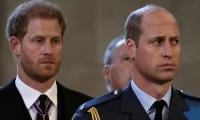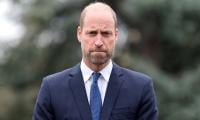ISLAMABAD: While the four major successes termed as ‘critical evidence’ by the Panama Joint Investigation Team (JIT) have already been proved wrong or have failed to prove anything wrong, the JIT report couldn’t come up with even a single conclusive evidence to hold Prime Minister Nawaz Sharif or any other respondent responsible for any crime or even any wrongdoing as per law.
Only the honourable judges of the Panama Implementation Bench can decide the merits and demerits of the proofs and documents furnished by the JIT. As the report has been made public, its findings are being analysed regarding their correctness and relevance to the allegations.
A narrative is being set that “evidence was not provided to the JIT” without specifically mentioning for which allegation among dozens of charges the evidence/ documents are not submitted.
The whole JIT report seems an unimpressive but more seemingly desperate attempt to make a case against Prime Minister Nawaz Sharif but legally the JIT and those who facilitated it miserably failed in the effort.
Regarding 13 questions of the apex court raised in the April 20 Panama judgement, the JIT has raised doubts on the prime minister merely on basis of its imagination but at no point any single evidence has been brought forward to hold the premier responsible. It is interesting that during the investigation of facts relating to 13+2 questions raised by the apex court in its April 20 judgement, the JIT never discussed any conclusive thing regarding prime minister’s role but when it comes to conclusion on any of these questions, the probing body suddenly declared that “it is proved beyond any doubt that it was Prime Minister Nawaz…”. From where and who made these conclusions will always remain a question.
Given the allegations raised before the apex court and the responses submitted by the Sharif family, it was an understanding of this correspondent that it makes a case for thorough investigations by the National Accountability Bureau (NAB) or the Federal Investigation Agency (FIA). However, after the JIT report and its investigations, it seems that allegations were made up and hollow as despite of using all state resources, the six-member team appointed by the apex court failed to come up with any conclusive evidence to legally support any allegation.
Questions asked to foreign states, while sending Mutual Legal Assistance (MLAs) requests, were framed cleverly to obtain specific answers which at best are themselves evasive and point towards no wrongdoing.
When Financial Investigation Agency (FIA) of British Virgin Island (BVI) was asked to authenticate “presence” of two letters, the agency was not even asked about the actual information about the beneficial owner of the companies. Dubai authorities were not even sent the agreement under question and were asked irrelevant trickily framed questions to obtain desired answers such as existence of specific record.
Situation will become automatically clear if the Supreme Court would itself send the agreements/ licences to concerned Dubia authorities to verify their existence and genuineness of notarisation. It is a known fact that the Sharif family was not the only business family of Pakistan which invested in Dubai in 1970s following nationalisation as a number of other business families also made investments abroad. Gulf Steel was a big unit, first in the steel sector in Gulf at that time. All the agreements and licences issued in Dubai, some of which are signed by the Sheikh Rashid Bin Saeed Al Maktoum, father of present ruler of Dubai Sheikh Mohammed Bin Rashid Al Maktoum, are submitted to Supreme Court and the JIT and apex court can get them verified at its own by sending the original agreements.
The JIT report is written with a predefined objective in mind and attempts are made to prove the things in a ridiculous manner making this whole document a classic example of comedy or errors, confusion, contradictions and misunderstanding of issues or clever misrepresentation of facts.
Offshore company of the prime minister, taking salary from it & not declaring in Pakistan
The only serious allegation that comes from JIT against the prime minister is about his “offshore company” FZE Capital, taking salary from it and not declaring the same in annual returns here in Pakistan. By calling a UAE company set up in the Jebel Ali Free Zone as an offshore company, the JIT made an intentional attempt to politicise and sensationalise rather than creating any legal basis. Given that there was a nominee of the Security Exchange Commission of Pakistan (SECP) in the JIT who should be well versed in such matters, the conclusion being owner of a company with an appointment letter of chairman is in itself is very surprising.
Taking salary from FZE Capital is denied by Nawaz Sharif and the JIT also failed to present any evidence of salary transferred to his account. Becoming designated as chairman of any company to avail visa and travel facilitation without any actual ownership or shareholding in the UAE is a normal routine and letter of appointment always has a specific format which requires mentioning the salary. The proof of taking salary could have been the evidence of money transfer from the company to bank accounts of Nawaz which the JIT failed to produce. The Jabel Ali Free Zone, Dubai, letter has only this information which doesn’t prove any wrongdoing. Clearly or deliberately specific clarification of ownership was not obtained or not included in JIT findings. Also declaration of tens of millions can be seen in the annual returns of the prime minister, including money coming from abroad, so there can be no reason not to mention/ declare this small amount of money. The only wrongdoing the JIT is trying to establish in this case is not having paid tax on the stated salary which also it fails to prove. The prime minister was not supposed to make declaration of anything relating to his honourary position in this UAE company in his annual tax returns or in any Election Commission of Pakistan (ECP) document as he was not having any financial benefit.
Major and final allegation of assets beyond means
Without coming up with exact figures, details of all assets and all sources of income, the JIT suddenly jumped to the conclusion that assets of Prime Minister Nawaz Sharif and his family are beyond known sources of income and thus also went on to recommend application of some sections of NAB law.
It is clearly a generalised statement with a jugglery of words and figures which is a routine matter type job for any chartered accountant. A chartered accountant in the JIT, Amir Raza, has been consistently holding this position for the last 17 years, and his findings are based on bias and there is nothing substantial to say something like ‘assets beyond means’ in a situation where all the assets in and sources of income are declared in annual returns year-by-year and foreign assets of family are in the name of non-tax resident Pakistanis children, who by Pakistan law are not required to declare any asset.
The basic question is which are those assets that are alleged to be beyond means and for availing/ purchasing which the source of income is not disclosed, more particularly any hidden asset of the prime minister?
The JIT report has no answer to this question.
An examination of annual returns of the Prime Minister Nawaz Sharif by The News shows that his declared assets are in form of shares in companies concerned, agriculture lands, houses and bank accounts. The JIT hasn’t come up with a single undeclared asset of Nawaz Sharif. Reference to undeclared salary from FZE Capital of the UAE does not constitute a case of assets beyond means and is already discussed above in detail. Similarly, in Para-V on Page 224 of the JIT report (Volume-I), it has been alleged that 467,950 shares of a company MBTML were not declared by the prime minister in his wealth statement for tax year 2011. The allegation is clearly made to target the prime minister in any way on such a legal point so that his disqualification may be considered by the court. Despite all documents were present with the JIT and it was aware of the actual situation, this point is intentionally stretched to mislead the apex court. The documents present with the JIT establish that the MBTML is a non-operating company which never commenced business. These shares were always declared before and after year 2011. The JIT knew it very well that there could be no objective whatsoever of concealment like MBTML shares when there is no wealth tax, which was abolished in 1999, and particularly given the fact that they were disclosed when initially purchased and also in subsequent years. The JIT was in the knowledge that these shares were subject to transfer as per family inheritance distribution scheme. Documents available with the JIT prove that MBTML shares accounted for in 2013 in Nawaz Sharif’s annual FBR returns when the assets of Mian Muhammad Sharif were transferred to successors as a result of family distribution of assets. The actual transfer of MBTML shares took place in 2013. Mentioning this very point as a “mis-declaration” while knowing actual facts and being in possession of all relevant documents is in fact a criminal attempt to defame a citizen and mislead the court. The apex court should examine the documents and may order an inquiry into the issue to ascertain the intent of the JIT.
The shares in companies held by Nawaz are declared in annual FBR returns from the date they were acquired. The land purchased by him before or after 1991 is also declared in the annual returns along with disclosure of source of income used to purchase the same. It would have been a success of the JIT, if it could have mentioned any asset or land which remained undeclared or source of income to purchase such asset or other assets was not shown in annual FBR returns. When some asset is declared in annual returns one has to show the source of income to buy the asset. If both are declared then how an allegation of “assets beyond know sources of income” can be levelled. Either a case can be made out by specifying an undeclared asset/ income, which at least the JIT failed to come up with, or the case be dropped.
Most hilarious is the “JIT” understanding that as companies were facing losses how the wealth of the prime minister and his members of his family kept on increasing.
In cases where annual returns are filed by the companies and the concerned individuals for making allegations of assets beyond means, one has to come up with specific mention of assets which were made without through unknown sources of income. In case of public office holders, specific mention of corruption or kickback instances is required. The JIT failed to do any of these.
It is evident from annual returns of companies that not all the companies owned by the family, including textile mills and sugar mills etc, continued to face losses every year. Documents obtained by the JIT at its own, apparently not read by its members, established that a lot of companies particularly in textile and sugar sectors made substantial profits. It is evident that certain companies faced losses during past few years but not all the times. Shareholders receive dividends and also receive salary if they hold any position in the company. Documents show that Nawaz Sharif was also receiving remuneration in millions before becoming prime minister on which he paid income tax as per FBR returns. It is important that remunerations are nominal as compared to dividends. The declared figures of salary and dividends show that Nawaz’s wealth continued to increase as is in case of majority of businessmen. What was hidden? What exactly JIT want to convey to the apex court by declaring that while companies were facing losses the wealth continued to increase is unclear. Furthermore, accounting losses are completely different from cash losses and accounting profits only determine amount of dividends. They certainly do not prevent payment of salaries or remuneration to their directors/ shareholders.
The JIT, however, did a favour to the Sharif family by proving performance analysis of all companies of the family from 1960 until 2015. It includes assets of the company, equity, loans and profits etc. The performance analysis belies JIT’s final conclusion of assets beyond means. The JIT failed to mention any single loan acquired by the Sharif family and which was written off, defaulted or was not settled in full. Documents submitted in the Supreme Court show that Sharif family did delay a foreign loan acquired from Al-Towfeeq Investment which was settled later on resolution of dispute between Hudaibiya and Al-Towfeeq. But what wrongdoing the JIT pointed out regarding loans and profits? There might have been some wrongdoings in businesses of Sharif family but the JIT has certified that there was not a single wrongdoing.
Which evidence of money trail of London flats are missing & link of the Prime Minister with it
The issue of four London flats has been explained by Sharif family and many questions had been raised on the money trail. Many questions are strong and highlighted many times in this newspaper. According to Sharif family, Hussain Nawaz is the owner of London flats through offshore companies Nielsen and Nescoll and flats are not declared in Pakistan because Hussain is not a tax resident in Pakistan and not obliged to file returns as per law. It is settled principle that to prove any business transaction as wrong or fake, one has to come up with evidence. As discussed in details of businesses in Dubai, closing issue of Gulf Steel Mills/ Ahli Steel in an indecent haste without meeting concerned witnesses, including Al Ahli family, merely relying on a dubious statement of “nonexistence of record”, it was clear intention of the JIT to be hell bent to prove that money trail is not established. This is without even bothering to mention as to how and in what form any record with any authority should exist beyond the banking law of record keeping of five years and corporate law for ten years.
There were chances that if the JIT would have worked sincerely and honestly, it could have proved that money trail as explained by Sharifs was not established. A conspiracy is evident in the methodology adopted by the JIT to hush up whole issue with target given to it without really investigating on ground.
After whole analysis of assets and sources of income, if only money trail of London flats assets is being questioned, anybody has the right to question or doubt the money trail provided by the family members of the prime minister, but which point the money trail provided has been proved wrong through any evidence? Sentences like “Gulf Steel is an imaginary story” are easy to say if one is unaware of this known huge investment in steel sector in Gulf. All details of misunderstandings of the JIT members regarding 1970s investments in Dubai are discussed in detail in this story.
But most relevant question is -- what is the link of the prime minister with this family investment at a time when he was not holding any public office?
Does the JIT want to say that Nawaz Sharif being the prime minister was the only source of income of family and that the family only became wealthy after Nawaz became the prime minister? Was the income from family businesses not enough to purchase these London flats, costing few million dollars, at any time during last five or six decades?
Question arises whether Mian Muhammad Sharif was a poor man? Can’t the assets of a grandfather be transferred to grandsons? Isn’t it a routine in our society? What the JIT proved on this point? Even prime minister spending time in London flats was questioned. Can’t a father live in flats inherited or purchased by his son? What wrong has been proved?
Onus of providing money trail was on the Sharif family which was provided. Now it can be accepted or proved wrong by the petitioners in the case or the JIT. The probe body could have raised serious objections by completing its investigations and examining all witnesses but irrelevant objections highlighted by it are based on misunderstanding of a business cycle and are discussed in detail below. The JIT though “rejected” whole “story” of Gulf Steel Mills but an in-depth reading of its investigations shows that basically it seems to doubt only one point in the money trail, the 1980 agreement of sale of 25 percent shares. Readers can go through the findings of the JIT on this point, given below, and can decide whether these carry any weight. Again how the JIT can link anything in this regard with the prime minister?
13 Questions of the Supreme Court in April 20 judgement & JIT findings
Here are the Supreme Court’s 13 questions and findings of the JIT on them along with analysis of the evidence it furnished to prove the case. It’s up to the reader to read the question, allegation and findings of the JIT and evaluate whether the evidence produced is proving something or not.
Gulf Steel Mills, 1970s investments in the UAE, the only objection of the JIT on money trail
Following seven questions (1 to 5 and 7 & 8) relate to investments in Dubai and the money trail which led to purchase/ acquiring four London flats.
1- How did Gulf Steel Mills come into being? 2- What led to its sale? 3- What happened to its liabilities? 4- Where did its sale proceeds end up? 5- How did they reach Jeddah, Qatar and the UK? 7- Is sudden appearance of the letters of Hamad Bin Jassim Bin Jaber Al-Thani a myth or a reality? 8- How bearer shares crystallised into the flats?
The JIT has declared that the story of Gulf Steel Mills was an imaginary story. It relies on a letter from Dubai authorities declaring one of the total three agreements presented by the Sharif family in apex court do not exist in their record. The letter from UAE comprises answers trickily framed questions and even the agreement in questions was not sent to the UAE. What does it prove? The Gulf Steel Mills was a known business of Sharifs in Dubai in 1970s. None else but the Late Sheikh Rashid Bin Saeed Al Maktoum, the then ruler of Dubai, not only witnessed Gulf Steel events but even the licences issued to the mills attached with agreements are signed by him. All these documents were registered with Dubai authorities in 1970s and in 1980. The 1980 agreement was registered with Dubai courts in 1980. All original documents are present. These documents are now notarised by ministry of Justice of UAE, Ministry of Foreign Affairs of the UAE and by Pakistan Consulate but tricky questions were only sent to the UAE Ministry of Justice which prove nothing and can be re-verified by the apex court by sending the agreements. According to Sharif family statements in apex court, 75 percent shares of Gulf Steel were sold to Ahli family of Dubai through a 1978 agreement in which the bank BCCI was also a partner and it received money against the loans obtained by Sharif. According to statement of Sharif family, while explaining money trail, remaining 25 percent shares were also sold to Ahli family on April 14, 1980, for 12 million dirham and the amount was invested in Qatar.
It is interesting that though the JIT declared that Gulf Steel story is imaginative, in its investigations, it mainly doubts the selling of 25 percent shares in 1980. More interestingly, the JIT only relied on a dubious reply that “No record exists” and not even bothered to record witness statement of the Ahli family which is still running the same Ahli Steel Mills in Dubai. Ahli family was not contacted for obvious reasons and objectives to say the least. It is also worth mentioning that statement of non existence of the 12 million Dirham transaction form UAE Central Bank is in itself bound to raise a lot of question given that the UAE Central Bank only came into existence in 1980 and the record keeping of transactions up to a legally required period of five years is the job of individual banks and not the Central Bank. Even if the Central Bank would have responded (though not mentioned) after contacting concerned bank but how the Central Bank can state this fact without mentioning its own rules that banks are not bound to keep the record older than five years. It is also worth mentioning that an SBP nominee in the JIT should be aware of such a basic fact.
JIT understanding and ‘imagination’ without going through actual documents of Ahli Steel Mills for the years 1978 to 1980 that overall business was in loss and thus Sharif family hadn’t received any money by selling 25 percent shares. It is really strange how the JIT reached on this conclusion without any documentary evidence. Sharif family claims that there was a boom in steel business in Dubai in 1980 and thus they got a handsome amount by selling 25 percent shares. The JIT hasn’t given any figures (easily available) to prove this claim of Sharif family wrong and just insisted and concluded with certain words that 25 percent shares were settled against liabilities of the business and Sharif family got nothing. No evidence is given on this count and declaration is made as if some heavenly message was conveyed to JIT members. Also any basic accountant would know that valuations of businesses or companies are not just made from profit/loss in any year and it is very surprising to note that such a basic and routine matter would not be in knowledge of the JIT members making such conclusions
The critical point in money trail: Was Ahli Steel facing losses during 1978-80? What was bank guarantee?
JIT's believes that there were losses and hence even the 12 million dirhams were utilised to pay off certain liabilities are clearly based on speculation and misunderstandings. No effort is made to prove the same through any documentary evidence and analysis and ‘presumption’ made on the basis of provided evidence that Ahli Steel was facing losses will be faulty for any accountant in the world.
According to Sharif family statement, the liabilities that remained after paying off BCCI in 1978 were paid off from two sources by Tariq Shafi and Mian Muhammad Sharif (MMS); first source was the sale of about 20,000 tons of scrap, billets and Rebar that was in stock when the factory ceased production in 1977. These belonged to MMS and were not part of the first agreement of 1978 which was in respect of fixed assets only like plant and machinery and stores and spares and not stock in trade or raw materials. Second source to pay off the remaining liabilities were the dividends/ drawings by the MMS from his 25 percent shareholding in Ahli Steel between 1978 and 1980, a duration when steel business was witnessing a boom in the Gulf.
The JIT members apparently believe that if MMS was receiving dividends of share, the shares also become diluted or diminished. Clearly, the 25 percent shares were there in 1980 and were sold at the market price when the business had flourished. Had the JIT members made attempts to follow the 12 million dirham trail, they might have gotten something solid to prove Sharifs money trail wrong. But the JIT stuck itself, apparently because of the time constraints, and decided to reach on a hypothetical conclusion and without any evidence to the contrary.
It’s a fact that the Rebar prices had dropped to a record low level of 800 dirhams but these prices rose sharply in 1978. According to Sharif family statement, the BCCI loan had been paid in 1978 as per the tripartite agreement of 1978; the financial cost of Ahli steel had been substantially cut down resulting in bumper profits between 1978 and 1980 and a substantial increase in net worth of the business as a result of which MMS walked away with 12 million dirhams, which he was to receive in six instalments.
This bank guarantee was to make the six payments to MMS. As all the six payments were received, the bank guarantee was never claimed and it became ineffective. The JIT has also tried to base its conclusion of unavailability of bank documents with this bank guarantee which was never cashed.
The banking law generally and particularly in the UAE does not require the central banks to maintain any form of record of individual transactions which are meant to be kept by banks and that only for a period of five years from the time such a transaction occurs. In fact after closure of account of any individual or company the record of such account is maintained only for a period of five years unless any transaction or account is under investigation by the central bank. Therefore, using the statement of non-existence of the record to falsify or declare a transaction not occurring without even bothering to investigate any corroborating evidence is quite serious. In the case it is the JIT which has a lot of explaining to do since ignorance of law and basic facts of whether the central bank maintains any records of transactions of individual banks is something that an SBP nominee is expected to know and daring such imaginative conclusions and declaring claims as untrue without any evidence is clearly with some misguided objectives. Apparently, the JIT was careful and conducting such investigations or mentioning such laws or rules could have destroyed the case made up by the JIT.
One wonders how the JIT went to the extent of declaring such huge business in Gulf, still continuing as an “imaginary story”.
Keeping in view all this and the time constraints, the JIT’s hesitation to meet Qatari prince can be well understood. Some of the same members of the JIT kept on waiting for a long time on the gate Chak Shehzad palace of General Musharraf to interrogate him. The statement made by the Sharif family clearly explains as to how the bearer shares of the offshore companies held by the Qatari royal family were translated into London flats in 2006 after the 1980 investment in real estate business was settled and the relevant laws and rules regarding bearer shares are explained below in the part of ownership of offshore companies.
Transportation of machinery from Dubai to Jeddah
In yet another cleverly framed question, the JIT in its MLA request to the UAE asked the authorities whether “scrap machinery” was transported from Dubai to Jeddah during 2001 to 2002. The answer was after checking record of Dubai Customs, it seemed that no machinery was moved. There is categorisation of equipment to transported and words “scrape machinery” were used to mislead Dubai authorities. Sharif family has come up with 22 original truck receipts of transportation of machinery from the UAE to Jeddah. No question was made on this count and according to statement Sharif family had any question made on this point, this record could also be presented before the JIT.
Linkage of London Flats with Al-Towfeeq Loan collateral
To prove that London flats were ownership of Sharif family in 1990s and that 2006 story is fake, the evidence given is a judgement of London High Court Queen’s Bench division which ordered attaching of these four London flats as Sharifs were delaying repayment of a loan.
This scribe after obtaining documents of London flats and copy of London High Court order also reported that these documents establish that London flats were ownership of Sharifs in 1990s. Many anchors have also conducted series of programmes on this point. However, Sharifs submitted in the Supreme Court that London flats were not used as collateral for obtaining Al-Towfeeq financial facility. According to Sharif family statement, London High Court ordered attaching of the flats on plea of Shezi Nackvi, the GM of Al-Towfeeq, who argued that as Sharifs were living in these flats since long thus it can be reasonably believed that they own these flats and hence the flats should be attached. Sharif family also attached a fresh affidavit from Shezi Nackvi declaring that it was not his knowledge that Sharifs owned these flats in 1990s and that these flats were not used as collateral to acquire Al-Towfeeq loan.
Still many questioned that this doesn’t prove Sharif’s view completely and it is their burden to come up with documentary evidence and prove beyond any doubt that London flats were not used as collateral at the time.
Sharif family responded this with two points. The first point was that the basic loan agreement was part of the record that was taken by the military after 1999 coup and was never returned. All anchors had taken up only this point and stormed Sharif family for not providing the evidence. The second point was that as the loan was received in foreign currency and millions of dollars came to Pakistan, it was mandatory for the Sharif family (Hudaibiya Paper Mills Limited) to inform the State Bank of Pakistan and SECP (Corporate Law Authority at that time) about the source of funds along with documentary evidences. The loan agreement and details were submitted with both the institutions. The JIT was in the knowledge of the same fact and it could have obtained these documents from these institutions and could have verified them.
It is alarming that despite having in its knowledge, the JIT didn’t even try to obtain these documents. The documents now obtained by The News show that the collateral used for obtaining Al-Towfeeq loan (equal to 260 million in Pak currency at that) was “all moveable properties of the company both present and future including plant and machinery, stock and spares and receivables etc”. Loan facilities were also acquired form Bank of America, Citibank. Exaggerated figures about the Ab-Baraka Islamic Investment Bank (Parent bank of Al-Towfeeq Investments) loan were quoted in the media.
This proves JIT’s ill intensions and sets aside the basic evidence presented by JIT that flats were ownership of Sharif family in 1990s.
It is being argued that Sharif family has been failed to come up with any single evidence regarding ownership of flats. As the flats were in fact owned by the offshore companies, so basically ownership of offshore companies has to be proved along with the timeline. What documents could have been presented, which documents are submitted and which are not – all this is discussed in detail in part of this story relating to issue of ownership of offshore companies.
Question-6, how flats can be purchased by children in tender ages
The Question-6 of apex court was whether respondents No. 7 and 8 in view of their tender ages had the means in the early nineties to possess and purchase the flats?
The JIT by rejecting the money trail, as explained above in ‘imaginary story of Gulf Steel’ held that flats were purchased by Sharif family in 1990s without coming up any single evidence. However, the JIT give one evidence that as Nawaz Sharif always used to use one of these flats so it was in his ownership. Keeping in view the above discussion on rejection of money trail and collateral issue and failing to come up with any evidence, this evidence and its philosophy is hilarious.
It is already discussed that it’s a routine that transfer of inheritance from grandparents to grandchildren is a routine issue, so if the resources of the family are recognised and money trail is not proved wrong, owning flats in tender ages is not an issue.
Who was the real owner of offshore companies which own London flats
The apex court in its April 20 judgement also raised the question 9- Who, in fact, is the real and beneficial owner of M/s Nielsen Enterprises Limited and Nescoll Limited?
The issue of offshore companies was new in Pakistan and many terms relating to offshore companies were confused. It was considered that the very concept of having offshore companies is illegal and is always linked to ill-gotten wealth. However, situation changed after the disclosure of offshore company owned by PTI chief Imran Khan following which some people got convinced that offshore companies can also be used for legal purposes.
Before coming to terms relating to offshore companies, it is important to mention that is declared that no bank accounts were associated with Nielsen & Nescoll except acquiring a loan in 2007 and companies were only used for property management of four London flats whereas the PTI chief hasn’t come up with a categorical statement that “no bank account” was associated with his offshore company that also owned a flat in London.
The system of offshore companies, especially those registered in the BVI is rarely explained in the media. The BVI government’s company house “Financial Services Commission” only registers companies and details of its directors. It never maintains register of real owners. Law firms, like Mossack Fonseca, are registered with the BVI government and are responsible to maintain complete information of offshore companies through registered service providers and are bound to provide the same to the government or its investigation agencies on inquiry. The service providers which assist offshore companies to manage routine affair like taxation, government fees etc maintain complete record, including the information of real owners of the companies. When some BVI government or any investigation agency enquires from law firms about the details of offshore companies and about their beneficial owners, the law firms ask relevant service provider (or introducer) to furnish complete information. The final information is with these registered service providers and whole set-up relies on the information given by them. In fact, the directors of the offshore companies are also some shell companies maintained by these service providers or some individuals or lawyers also arranged and maintained by service providers.
Like in case of “Niazi Services Limited”, the offshore company owned by PTI chief Imran Khan, the directors were also three shell companies namely i)- Langtry Trustees Limited ii)- Langtry Secretaries Limited iii)- Langtry Consultants Limited. These companies had addresses in Jersey, Channel Island.
It is interesting to mention that documents obtained by The News from Jersey, while breaking the story of “Niazi Services Limited”, no document was showing “Imran Khan” as the real owner of this offshore company. This information was with the service provider whose name was never revealed by the PTI chief but he has admitted being real owner of the company as his London flat was registered in the name of this offshore company. It is also interesting that the PTI chief also changed the service provider and later director of companies were changed to shell companies i)-Barclays Private Bank & Trust Limited ii)- Barclay Trust Channel Limited iii)- Barclay Trust Jersey Limited all having address “39/41, Broad Street, St Helier, Jersey JE4 8PU, Channel Island. Still the name of new service provider who was maintaining these shell companies was not surfaced. One document also showed Aleema Khan, sister of PTI chief Imran Khan, as one director of company.
Coming back to system explained in the BVI corporate laws, the record of beneficial ownership is maintained by service providers.
In case of Sharif family offshore companies, all documents were presented before the court and the JIT. As offshore companies also own the London flats, so the documents of ownership of offshore companies is also the documents of ownership of London flats and it could not be said the documents of London flats were not submitted.
Panama Papers contained some letters written by the FIA of BVI in June 2012 to the law firm Mossack Fonseca to know about the details, including beneficial ownership of offshore companies Nielsen and Nescoll. In its response, Mossack Fonseca provided details and also written that Maryam Nawaz is beneficial owner of these two companies. These documents were not challenged by the Sharif family in entirety in the Supreme Court but it was argued that Mossack Fonseca provided wrong information to the FIA of BVI regarding beneficial ownership and that it was based on misunderstanding of some employee of the private law firm or the service provider. The three judges who ordered constitution of the JIT were not satisfied with the evidences presented to them, which also include these letters of the FIA of BVI, tasked the JIT with the question to find out the real owners of the offshore companies Nielsen and Nescoll. Instead of asking BVI government to inform it about the real beneficial owner of the offshore companies, the JIT sent these letters (communication between the FIA of BVI and Mossack Fonseca in June 2012) to the BVI government through attorney general of BVI and simply asked to authenticate these letters. These letters really existed and their existence was never challenged. These letters were never conclusive evidence about the real ownership of offshore companies. The FIA of BVI in its response to the MLA request of the JIT authenticated these letters and JIT rushed to declare that Maryam Nawaz was the beneficial owner.
The JIT intentionally avoided to ask the real question about the beneficial ownership of offshore companies in its MLA request and framed the tricky question as was the case in questions sent to the UAE under MLA. Had the JIT asked the real question, it could have gotten the correct answer. This was clearly done to target Maryam Nawaz keeping in view her political profile. The Supreme Court of Pakistan can even now order sending of a proper MLA request with accurate and exact question, can monitor the process once again, and can get the correct answer.
It is argued that why Sharif family couldn’t come up with a document on its own. As explained earlier, under BVI laws, the BVI government does not maintain a register of real owners of the offshore companies. A client, the real owner of offshore companies, can get documents from service provider which ultimately holds conclusive information. The Sharif family has provided the apex court the certificate of the previous service provider Minerva showing that it was Hussain Nawaz who dealt with them regarding management of offshore companies Nielsen and Nescoll. Like PTI chief Imran Khan, the service provider of Sharif family offshore companies was also changed in 2014 from Minerva to JPCA. JPCA, which is the relevant forum for the Sharif family to approach under the BVI laws, provided two certificates confirming that it was Hussain Nawaz who made all dealing with them and they never met Maryam and that as per their record Hussain is the real beneficial owner of the offshore companies and Maryam is trustee.
Clearly, these are the conclusive evidences as far as the clients, Sharif family in this case, are concerned under the BVI laws and rules. The Supreme Court can examine this arrangement of offshore companies and maintaining of record under BVI laws, declare it correct or wrong. If anybody from petitioner’s side doesn’t like this arrangement, this is what offshore companies are about. If the apex court does not agree with this BVI legal framework, the honourable court will have to guide the respondent about the documents it actually requires and from which authority it can be obtained. The court can also consider ordering sending a fresh and correct MLA request to the BVI to know the actual owner.
Under BVI laws, there was no need to register real owner of bearer share offshore companies. Even the service providers were not supposed to keep the record of real owners of the offshore companies with bearer shares. As appears from the word, “bearer shares”, the one bearing them was the owner. However, after 9/11 things started changing and under a 2004 companies law, law firms and service providers were made bound to maintain the information of real beneficial owner. The law became fully implemented in 2007. That’s why the bearer shares of Nielsen & Nescol were changed into ordinary shares maintained by Minerva directors. Only the Supreme Court can guide or tell which document can be obtained from which authority to prove that who was real beneficial owner of Nielsen and Nescoll. The BVI laws need interpretation on this particular point here in Pakistan.
Offshore companies are used for property management in the UK. Clearly, nobody can be pushed against the wall and the counsels of the petitioners should come up specifying what document exactly they consider as the conclusive document to confirm the beneficial ownership of the offshore companies if they think that letters from registered service providers Minerva and JPCA are not sufficient.
Furthermore, it is important that given specific nature of the jurisdiction and most importantly the fact that the trust deed is signed by both and confirmed to be signed by the lawyers who have witnessed and confirm that the trust deed having been registered with them is normally adequate proof in any court of law. In fact, had it been the other way around where Hussain Nawaz would have been trying to prove his beneficial ownership if being denied by Maryam then in such case Maryam would certainly have lost her case. It is now surprising, however, that despite existence of such record and legal confirmation the issue still remains on whether the trust deed is genuine or not. Clearly the onus of proof is shifted to declared guilty unless proven innocent by the JIT members.
Trust Deed
It is alleged on basis of report of a hired UK firm that the font used in the trsut deed claimed to be signed in 2006 is “Calibri” which was officially released in January 2007. It is an admitted now that Calibri font was available for download for any user in 2004 and afterwards before its official release in 2007. A report shows as many as 15 million users had donloded it before its official release by Microsoft in January 2007. This can be point to make a news story but can never serve as an evidence in a court of law.
Hill Metals, Saudi Arabia, transfer of funds to prime minister, Flagship
The Supreme Court raised these four questions in its April 20 judgement:
10- How did Hill Metals Establishment come into existence?
11- Where did the money for Flagship Investment Limited and other companies set up/ taken over by respondent No. 8 come from?
12- Where did the Working Capital for such companies come from?
13- Where do the huge sums running into millions gifted by respondent No. 7 to respondent No. 1 drop in from?
Regarding establishment of these companies, Sharif family has submitted all details none of which have been proved wrong by the JIT with any evidence and only speculations are made.
This was another unsuccessful attempt by the JIT to mislead the SC is the allegation that 88 percent of the net profits of Hill Metals were remitted to the prime minster between 2010-15 and hence Nawaz Sharif being the major beneficiary is also the real owner of the Hill Metals. Regardless of whether such a conclusion has any basis of law in any part of the world brings to mind the question of what actually JIT objectives have been in this whole process.
This is the basic allegation by properly examining which Supreme Court can reach on a conclusion and can give a verdict on neutrality, competence, understanding and honesty of the JIT. Any good accountant will term it rubbish as even the information and the documents available with the JIT don’t prove what it has concluded simply to achieve the objective and target the prime minister.
Net profits of any organisation are computed after charging to the profit and loss account. A lot of expense which do not actually entail a cash outflow and hence the actual cash profits are much higher than the “net profits”. Some examples of such non-cash items are depreciation on assets, amortization, provisions against doubtful debts and provisions against income tax.
A certificate issued by a member firm of Grant Thornton International, a globally leading firm of chartered accountants and the fifth largest worldwide, Saudi Arabia confirms that the “net profits” of Hill Metals between 2010-15 were Saudi Riyals 37.427 million, equivalent to PKR1.029 billion. Not only this, the closing cash balances ranges from PKR 83.215 million to as much as PKR 879.395 million in 2010.
At the end of 2013, the closing cash and bank balances were as much as PKR677.38 million for example. The closing cash and bank balances that an enterprise has are obviously after all cash outflows. This amplifies the point that in so far as the financial health of Hill Metals as per the auditor’s certificate is concerned the organisation is in fact cash rich to be in a position to make such remittances.
As for whether the remittances constituted 88 percent of the net profits, a correct comparison would be to compare the total cash generated from the operations by adding non-cash expenses to the net profits and then calculating the percentage.
Figures obtained reveal that the actual remittances made by Hill Metals to Prime Minister Nawaz Sharif between 2010-15 were PKR938 million. The actual cash generated by Hill Metals during the said years, according to documents which were also available with the JIT, was PKR 4.831 billion, therefore such remittances constituting only 19.40 percent thus and not 88 percent as alleged by the JIT to mislead the SC. Therefore to state that 88 percent of all profits of the company were remitted is actually trying to mislead and influence the Supreme Court. In fact a company may be in accounting losses but still have positive cash reserves which may be utilised by its owner for personal remuneration. It is therefore worth mentioning that based on this and amount of remittance, the conclusion and assertion made by the JIT of beneficial ownership of Nawaz Sharif is not only nonsensical but has no legal basis in any corporate law regime whatsoever. Given that the JIT also comprises senior members of SBP and SECP who would be expected to have some basic understanding of corporate law, making such assertions is not only ridiculous but also clearly a very desperate attempt to misguide the court and the public at large and target the reputation of the prime minister.
What the JIT wanted to prove will remain a question in the history of Pakistan and will serve as a classical and hilarious example for the students of accounting.















